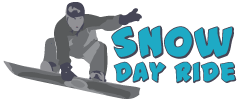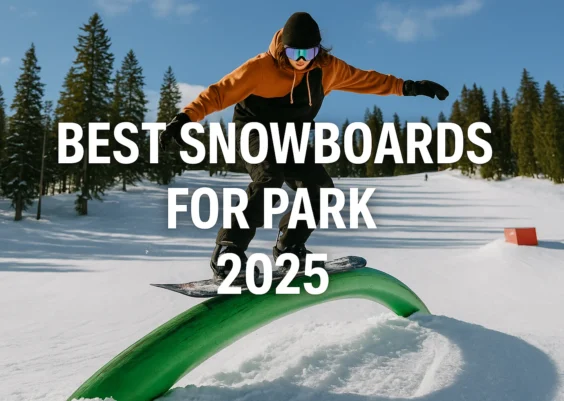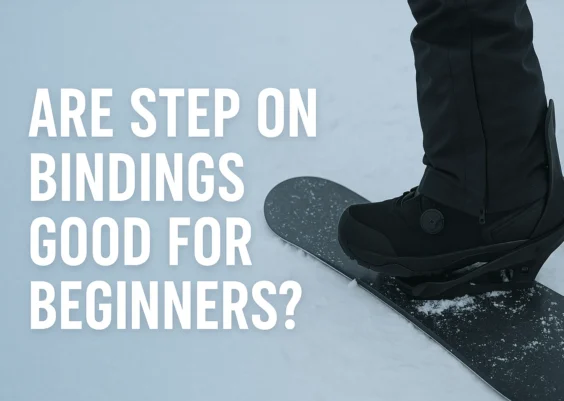Quick Facts
- Beginner snowboards are usually softer with a flex rating of 2–4.
- Board length should fall between chin and nose height for stability.
- Wider waist widths match larger US boot sizes to prevent toe drag.
- All-mountain boards are the best starting choice for first-time riders.
- Typical beginner boards cost $280–$450 with bindings included.
What snowboard is best for beginners? The answer depends on finding a board that balances control, comfort, and confidence. First-time riders need equipment that forgives mistakes, keeps turns smooth, and builds skill step by step. A board that’s too stiff or long makes learning harder, while the right shape and flex help progress faster.
Whether you plan to ride groomed runs, explore small freestyle jumps, or try powder on deeper days, choosing correctly makes all the difference.
In this guide, we’ll break down board length, width, flex, price ranges, and setup tips so you can start riding with the right gear from day one.
What Snowboard Is Best for Beginners?
The best snowboard for beginners is short, soft, and easy to control. A softer flex board with twin or directional-twin shape allows new riders to turn smoothly and recover from small mistakes. Choosing the right size, width, and flex matters more than brand or graphics, so let’s look at the numbers.
Board Length by Rider Weight and Height
For first-time riders, the board should reach between your chin and nose. Weight plays the bigger role, since too short feels unstable and too long feels hard to maneuver.
| Rider Weight (lbs) | Rider Height (ft/in) | Recommended Length (cm) |
|---|---|---|
| 100–130 | 4’10”–5’4” | 135–145 |
| 130–150 | 5’2”–5’6” | 145–152 |
| 150–170 | 5’5”–5’9” | 152–158 |
| 170–190 | 5’8”–6’0” | 158–163 |
| 190–220+ | 5’10”–6’4”+ | 163–170 |
Boot Size to Waist Width
Matching board width to boot size prevents heel or toe drag. Beginners often overlook this, but it directly affects balance.
| US Boot Size | Recommended Waist Width (mm) |
|---|---|
| 6–8 | 240–250 |
| 8–10 | 250–255 |
| 10–12 | 255–265 |
| 12–14 | 265–275 |
Flex Rating vs Forgiveness and Stability
Beginners should aim for soft to medium flex. Soft boards are easier to turn and recover with, while stiffer boards handle speed but punish mistakes.
| Flex Rating | Feel | Forgiveness | Stability | Best For |
|---|---|---|---|---|
| 1–2 (Soft) | Very loose, playful | High | Low | First-time riders |
| 3–4 | Balanced, smooth | Medium-High | Medium | All-mountain start |
| 5–6 | Responsive, stable | Medium | Medium-High | Confident beginners |
| 7–10 | Aggressive, stiff | Low | High | Experts only |
Men, Women, and Youth Beginner Boards
- Men: Boards run longer and wider. Choose soft all-mountain or directional twin boards.
- Women: Lighter flex, narrower waist widths. Brands like Burton, Salomon, and Ride offer women-specific lines.
- Youth/Kids: Go shorter, around chest height. Flex is naturally softer for easier turning.
Terrain Notes for Beginners
- All-Mountain: Best starter choice. Handles groomed runs and small powder days.
- Freestyle: Softer boards, true twin shape. Good for park beginners and flat-ground tricks.
- Powder: Directional shape with larger nose. Avoid for first weeks; harder to learn on.
Beginner Price Ranges
| Category | Price Range (USD) | What You Get |
|---|---|---|
| Budget Boards | $250–$350 | Basic camber/rocker, soft flex |
| Mid-Level Boards | $350–$500 | Better materials, more stability |
| Packages | $280–$450 | Board + bindings beginner sets |
Stance and Binding Tips
- Stance Width: Start shoulder-width apart for balance.
- Angles: +15° front foot, –6° back foot (duck stance).
- Highbacks: Keep them neutral to avoid over-controlling turns.
- Bindings: Choose medium-soft flex, strap-in for more support.
FAQs
1. Should beginners choose rocker or camber snowboards?
Rocker boards are more forgiving, making turns easier and reducing edge catches. Camber offers better edge grip and pop but punishes mistakes faster. Most first-time riders do well on a flat-to-rocker or hybrid profile, which blends stability with easy turning for smooth learning progress.
2. Is it better to buy or rent a beginner snowboard?
Renting is a smart choice for the first few days since it lets you test different sizes and shapes. Buying makes sense if you plan to ride often, as it saves rental costs and gives you gear fitted exactly for your body.
3. How important is snowboard length for beginners?
Length is critical. A board that’s too long feels heavy and hard to control, while a very short board feels unstable. Beginners should pick a board between chin and nose height, matched to weight, for easier balance, smoother turns, and faster confidence building.
4. What flex rating should a beginner snowboard have?
Flex matters as much as length. A soft to medium flex rating (2–4) helps beginners initiate turns with less effort and recover from mistakes. Stiffer boards (6+) provide stability at high speeds but require more strength and control, which new riders usually lack.
5. Do beginner snowboards work on all terrains?
Beginner boards are designed for groomed runs and light powder, which is where most first-time riders learn. They are not ideal for steep terrain, deep powder, or big jumps. As skills improve, riders can explore more specific boards built for freestyle or freeride conditions.
6. What stance angles are best for first-time riders?
A duck stance (+15° front, –6° back) is the most beginner-friendly because it allows comfortable riding in both directions. It supports balance and turning while reducing stress on the knees. Shoulder-width stance is a good baseline, with adjustments later as riding style develops.
Final Thought
Choosing the right snowboard as a beginner sets the tone for every run that follows. A board that matches your weight, stance, and comfort level turns early practice into real progress. With today’s wide range of shapes and flex ratings, finding what snowboard is best for beginners is easier than ever. The right match won’t just help you learn faster – it will make every ride more enjoyable from your very first day on the mountain.




